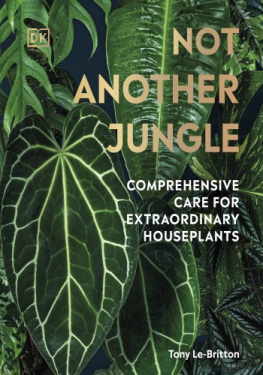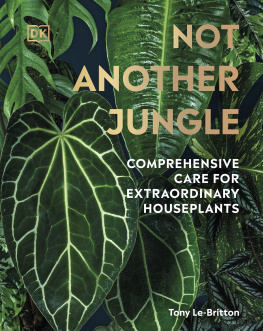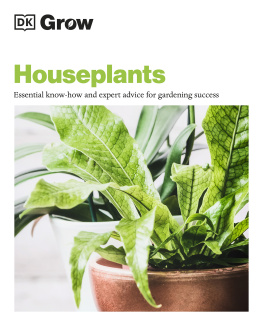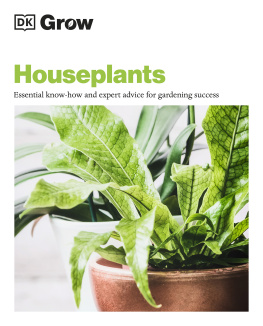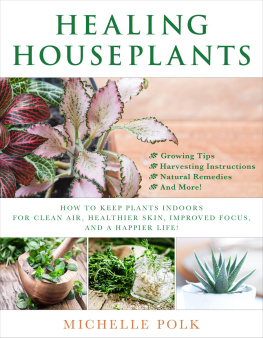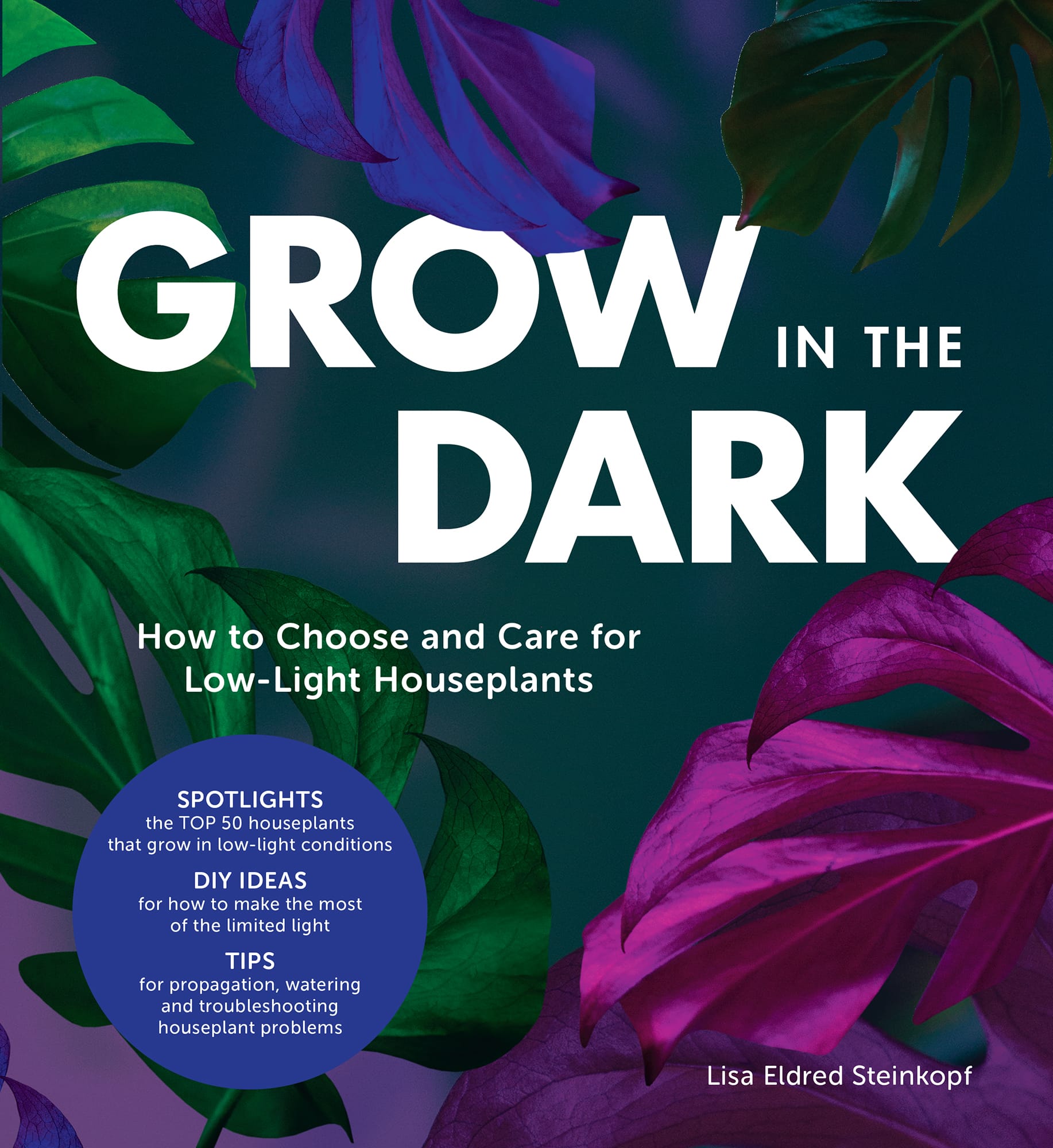GROW IN THE DARK
How to Choose and Care for Low-Light Houseplants
Lisa Eldred Steinkopf
Photography by HEATHER SAUNDERS

Introduction
Are you yearning for some green in your life? Have the artificial plants with which youve decorated your home or apartment not fulfilled your need for nurturing a living thing? The only thing they are doing is collecting dust. Adopting a puppy, a kitty, or even a fish may not be possible at this time in your life, but you would love to have something to take care of and talk to.
In this fast-paced, stressful world we live in, it may not always be feasible for everyone to take a walk in the park where green living things are in abundance. If you live in a dark, shadowy apartment or an urban area where tall buildings block out your light, it may be even more challenging. Your workplace is probably also devoid of any natural elements. Why not bring nature home to your space with a green friend or two?
Not only do houseplants add beauty to your home, but most importantly, they take things away. It has been proven by NASA scientist Dr. B. C. Wolverton that plants can remove harmful chemicals from our air, called volatile organic chemicals (VOCs). These chemicals come from things that are in all our homes: paint, furniture, carpeting, and electronics. The good news is, one houseplant placed every 100 square feet will remove those chemicals.
Plants also help lower blood pressure and add to ones happiness. If you have heard this good news, Im sure you have rushed out to buy a plant, confident that it is going to clean the air, lower your blood pressure, and make yourself and those around you happyonly to find that a few short weeks later, not only are you not happier, your plant isnt either and is, in fact, dying a slow death. How can this barely living plant clean the polluted air or lift anyones mood? Youre frustrated that youll never have a green thumb, not even light green.

Im here to tell you that you can have a green thumb! It takes nothing more than learning to pay attention to the needs of your plants and meeting those needs in a timely manner. The primary factor to consider when choosing a plant is light. It will determine whether your plant will barely survive or thrive. Quite often, high-light plants are purchased and placed in a low-light situation and vice versa. A perfect example is the succulent craze that has swept the countrymost people, especially those in northern areas, simply do not have the amount of light that succulents need to live and grow well.
This book will cover the care of a plethora of plants that can live in a low- to medium-light environment. It will also give you some ideas of ways to not only make the most of the light you have but also improve and supplement your light levels with a simple electric light set-up.
It is not as difficult as you think to find a plant that will live in your light levels. The key is to do a little research before you purchase a plant. So read on, and lets find the perfect plant for your home!
CHAPTER 1
Illumination
Illumination is the key to growing any houseplant successfully. Light in any form, be it natural or electric, is the sustenance for your plants. The only time they eat is when light is falling on their leaves. When a plant takes in light, water, and carbon dioxide, it converts it to food for itself. This process takes place in the green, chlorophyll-filled cells of the plant and is called photosynthesis. The best part for you, me, and all life on earth is that the byproduct of photosynthesis is oxygen. If it werent for plants, life on earth as we know it would not exist.
SUNLIGHT
Lets first talk about the light everyone has streaming into the windows of their homes: sunlight.
SOME HOMES RECEIVE more light than othersthis depends on the style of home and the number of windows it has.
If light is the key to plant health, how do you know whether you have enough to sustain plant life? If there is enough light in your room to read a book, you have enough to sustain a low-light plant. You may have more light than you realize and can grow a large variety of plants. Initially, you need to determine the amount of light in your home and from which direction it originates. It is important to know whether your windows face east, west, north, or south. Most homes and large apartments have windows facing multiple exposures. If, however, you live in a small apartment, you may have windows that face only one direction.
If you arent compass-savvy, its easy to determine an east- or west-facing window based on whether you notice if the sun rises or sets in it, respectively. If you never notice any direct sun at all, you probably have a northern exposure. On the other hand, if the sun shines in your window all afternoon, your window faces south.
Skylights are considered a fifth exposure, as they allow extra light into a room to supplement the wall windows you already have. Lucky you if you have one of these! Lets discuss the five directional exposures and the plants they will sustain.
East
An east window is one of the best for plants. East windows receive soft, cool morning light. Because the sun is coming up over the horizon, it shines in at an angle and reaches quite far into the room. As the sun rises higher in the sky, the area of light in the room will become smaller. African violets, ferns, begonias, prayer plants, aglaonemas, and many other varieties will do well in this exposure. With an east window, the plants you place farther away from it should be those that prefer low light. The windowsill of an east window will sustain medium- and possibly even high-light plants.
West
A west windows light is almost the same as that from one that faces east, but the western sun exposes your plants to a higher level of heat. High-light plants will do wellthrive, in factin the windowsill of a west-exposure window. Western light is also on an angle as the sun is setting, so both east and west exposures can support more plants farther into the room. If a plant likes a medium to low light, do not place it on the windowsill of a west window, as that may provide a bit too much light and heat for it. Plants that will thrive in western exposure include cacti and other succulents, air plants, snake plants, ficus, and many flowering plants. Because of the low angle of the sun late in the day, aglaonema, spathiphyllum, and other low-light plants can live 4 to 5 feet back from the window and do well.


